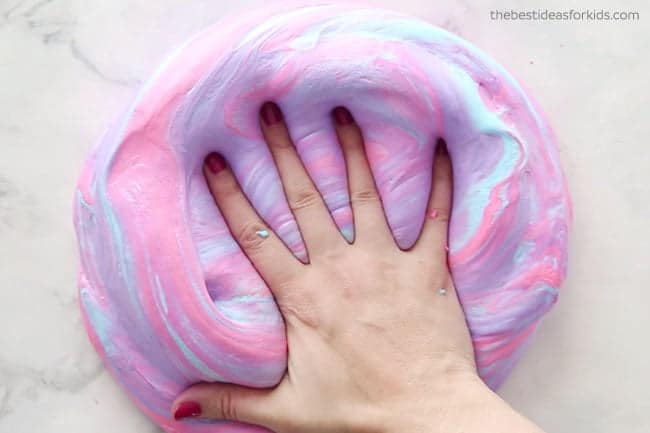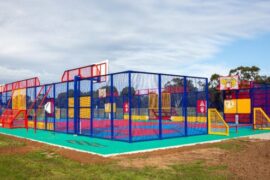Exploring the Gooey World of Slime: What Is Slime Made Of?
Greetings, curious parents! If you’ve got a kiddo who’s a slime enthusiast, you’ve probably watched – with equal parts fascination and maybe a bit of squeamishness – as they’ve stretched, pulled, and squished their way through countless batches of this gooey substance. You might be wondering just what goes into creating this stretchy, bouncy, and sometimes glittery concoction that has captured the hearts and hands of children everywhere. Well, worry not! We’re here to delve into the fascinating science behind slime and demystify its components for you. So, grab your lab coats (figuratively speaking), and let’s dive into the sticky details of what slime is really made of!
The Basic Slime Formula
At its core, slime is a type of non-Newtonian fluid, which means it doesn’t behave like your typical liquid (think water or oil). Instead, it straddles the line between a liquid and a solid, changing its flow based on the force applied to it – pour it slowly, and it seems like a liquid; punch it quickly, and it feels solid. The magic of slime starts with a few basic ingredients:
- Glue: The foundation of most homemade slimes is good ol’ white PVA (polyvinyl acetate) glue. It’s the same stuff we’ve all used for arts and crafts at some point in our lives! The PVA in the glue serves as the polymer that holds the slime together.
- Borax Solution: To transform the glue into slime, you’ll often use a borax solution (made by mixing borax powder with water). This acts as the cross-linker that turns the liquid glue into a stretchy, cohesive mass.
- Water: Water is essential as it helps to dilute the glue, making the slime less sticky and more malleable.
- Coloring: To jazz things up, you can add food coloring, acrylic paint, or even natural dyes to give your slime a pop of color.
- Add-Ins: Here’s where the fun begins! There are endless possibilities for customization with add-ins like glitter, beads, foam balls, and even scents to make your slime as unique as your child’s imagination.
Making Slime Safe and Enjoyable
As parents, safety is our top priority, and there are a few important pointers to ensure that slime-time is also safe-time:
- Always supervise slime preparation and play, especially with younger children.
- Use non-toxic glue and make sure any other additives are safe for skin contact.
- If you or your child has sensitive skin or allergies, consider using alternatives to borax, such as baking soda and contact lens solution (which contains boric acid, a cousin to borax) or cornstarch-based recipes for a completely borax-free experience.
- Keep slime away from fabrics and surfaces that could be damaged, and always wash hands after playing with slime.
Now that you know the primary ingredients and safety tips, you’re well on your way to understanding and enjoying the wild world of slime with your children. Stay tuned as we further unravel the science of slime in the next section where we’ll dive deeper into alternative recipes and the incredible versatility of this playful substance!
Remember, making slime isn’t just about the fun; it’s a fantastic way to introduce basic chemistry concepts to young, inquisitive minds. Plus, it’s a bonding opportunity and a perfect weekend project that combines learning with play. So, the next time your child proudly presents their latest slime creation, you’ll know exactly what went into making it, and you can share in their excitement and maybe even contribute some cool ideas for their next slimy masterpiece. Let the slime adventures begin!

5 Essential Tips for Parents: Preparing for Slime-Making Fun
Before you and your little ones begin your slime-making journey, here are five important things every parent should know:
- Understand the Slime Ingredients: Familiarize yourself with the ingredients needed for your chosen slime recipe. Knowing the functions of basic ingredients like glue, activators (borax solution, contact lens solution, etc.), and add-ins can help you make informed choices and troubleshoot if the slime isn’t coming out as expected.
- Choose the Right Environment: Find a spacious and easily cleanable area for your kids to work on. A kitchen table or a countertop with a plastic tablecloth can serve as the perfect slime laboratory since it will make cleanup a breeze afterward.
- Have the Tools Ready: Gather all your tools such as mixing bowls, measuring spoons, spatulas, and storage containers beforehand. This preparation can make the slime crafting process go much smoother and allow your kids to enjoy uninterrupted fun.
- Teach Basic Safety Measures: Before starting, educate your children on the importance of not ingesting any slime components and what to do if they get slime in their eyes. Discuss the need to keep slime away from pets and small siblings, as it can be harmful if swallowed.
- Plan for Allergy-Friendly Alternatives: If your child has skin sensitivities or allergies, be prepared with alternative recipes that don’t use common irritants. For example, you can create slime with shampoo, cornstarch, and water for a simple, borax-free option.
Alternative Slime Recipes for Creative Minds
While the traditional glue and borax solution recipe is quite popular, there are several ways to make slime that cater to different preferences and situations:
- Fluffy Slime: Incorporate shaving cream into your recipe for an extra fluffy and soft texture that’s sure to delight. Just mix in the shaving cream with your glue before adding your activator!
- Edible Slime: For younger children who might be tempted to taste their creations, you can use edible ingredients like marshmallows, cornstarch, and coconut oil to make slime that’s safe to eat (though not particularly tasty).
- Gluten-Free Slime: In case of gluten sensitivities, use a gluten-free alternative like a cornstarch or xanthan gum base for your slimes instead of ingredients that may contain gluten.
- Eco-Friendly Slime: Opt for biodegradable glitter and natural colorants to make your slime play more environmentally friendly.
- Themed Slime: You can customize slimes according to themes like holidays, favorite colors, or glow-in-the-dark for a cool effect under black light.
The Science Behind the Slime
Now that you’re equipping your child with the perfect slime recipe, it’s also a great opportunity to delve into the science behind this substance. Explaining the role of polymers, which in slime are long chains of molecules that cross-link to create the unique texture, can foster a deeper understanding and appreciation for how everyday materials can be transformed. Plus, experimenting with the ratios of ingredients can be a gentle introduction to concepts like measurements and following step-by-step procedures – essential skills in both science and cooking!
Whether you’re watching the joy in your children’s eyes as they create and play with their handmade slime or participating in the process along with them, making slime is a playful and educational activity that’s sure to create vibrant memories. Keep these tips in mind and you’ll be well-prepared to tackle the gooey world of slime, ensuring a safe, enjoyable, and possibly even educational experience for the whole family.
So, let your children’s creativity run wild, and remember that with every squish and stretch, they’re not only having a blast but also sharpening their cognitive skills. Now, let the slime-making commence!
See more great Things to Do with Kids in New Zealand here. For more information see here
Disclaimer
The articles available via our website provide general information only and we strongly urge readers to exercise caution and conduct their own thorough research and fact-checking. The information presented should not be taken as absolute truth, and, to the maximum extent permitted by law, we will not be held liable for any inaccuracies or errors in the content. It is essential for individuals to independently verify and validate the information before making any decisions or taking any actions based on the articles.




